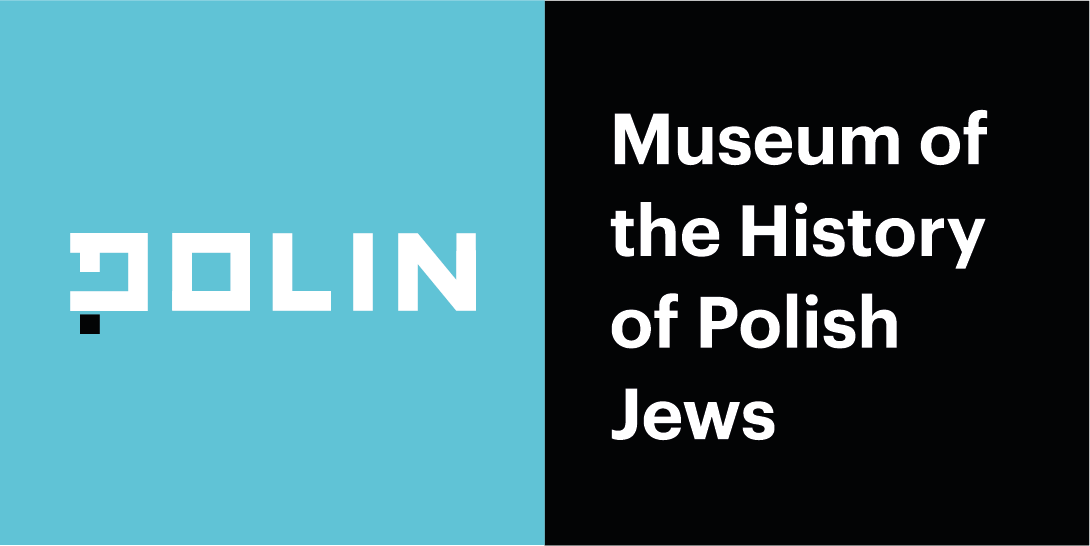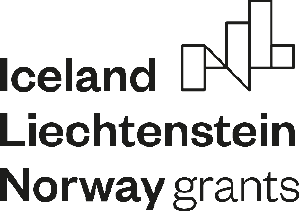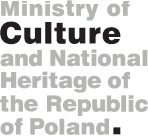Jews were not permitted to settle in Kielce until the 1830s as a result of the city remaining under the jurisdiction of the bishops of Kraków, who in 1535 had been granted the de non tolerandis judaeis privilege by King Zygmunt I. In the 16th and 17th century, this ban was frequently broken; hence in 1761, under the bishops’ decree, all Jews living in Kielce were expelled from the city. Nevertheless, many kehillas continued to develop in the surrounding towns, like Chęciny, Pińczów, and Chmielnik[1.1].
Jews began to resettle in Kielce in 1833, after Jewish merchants from Chęciny had intervened and obtained permission to live in the town from the Municipal Office. Although Kielce’s inhabitants, fearing economic competition, succeeded in suspending this decision, a large number of Jews lived in the city illegally, while another group was formally registered in the nearby Pakosz Municipality. In 1843, Kielce’s inhabitants forced the Council of Administration to ban Jews from the city starting from 1 July 1844. However, in the years 1858–1862 Jews returned to Kielce. At that time the city welcomed dismissed Russian-Jewish servicemen and their families, as the ban did not apply to them. In 1852, ca. 100 Jews Jews lived in Kielce; they belonged to the Chęciny kehilla and constituted a small percentage of the city’s population[1.2]. It was only after Aleksander Wielopolski introduced his reforms that the tsarist authorities issued a decree that permitted the Jews to settle freely in Kielce in 1862. Just six years later, in 1868, an independent kehilla and the first Jewish cemetery were established. The first rabbi in Kielce was Tuwia Gutman HaCohen. His successor was Mosze Nachum Jeruzalimski, an expert on rabbinic literature[1.3]. There was also an active Hasidic community in the city.
Towards the end of the 19th century, in early 20th century, and during the interwar period, the kehilla of Kielce underwent rapid demographic and economic development. By 1873, Kielce was inhabited by 974 Jews, and by 1909 as many as 11,206. Depending on how wealthy they were, Jews lived in the city centre or in the poorer suburbs – Szydłówek, Psiarnia, Piaski, and Barwinek. Before World War I, Kielce had a large synagogue constructed in 1902, nine prayer houses, over 30 cheders attended by more than 900 boys, and several private secular elementary and secondary schools for boys and girls. Jewish merchants had a significant number of industrial plants, among them the vast limestone processing plant “Wietrznia”, quarries, tanneries, woodworking plant, plus nearly half of the city’s shops, bakeries, and furniture stores. Jews also ran many smaller industrial plants manufacturing footwear, metal goods, candles and soap. The richest Jewish inhabitants of Kielce during this period included the Rozenholc, Goldfarb, Lifszyc, Chelmner, Gołębiowski, Machtynger, Ajzenberg, Bugajer, Orbajtel, Kaminer, Waksberg, and Tenenbaum families, as well as Josef Orbajel, Lemel Kahan, Herszel and Eliezer Rajzman, and Joel and Icchok Klajnman[1.4].
On 11 November 1918, Jews in Kielce held a rally to demand political and cultural autonomy for all Polish Jews. In response, Polish right-wing activists destroyed many Jewish-owned shops and houses.
During the interwar years, several banks in Kielce belonged to Jews (among them the Cooperative Commercial Bank run by Aaron Jozef Moszkowicz and Jakob Fridman, the Discount Bank run by Chaim Wajnryb and Herszl Sercarz, the Credit Bank run by Melecah Engelrad, Mejer Zloto, and Mosze Cohen, and the Loan Bank run by Mordechaj Fiszel and Judel Kaminer)[1.5]. Many factories, industrial plants, and shops were owned by Jews (e.g. textile, leather, clothing, and grocery shops, haberdasheries and shops selling imported foodstuffs and spices). Jewish craftsmen enjoyed a strong position in the local market, especially as tailors, hat makers, tinsmiths, shoemakers, carpenters, painters, glaziers, clockmakers, and jewellers. Many Jewish bakeries and butcheries catered not only to Jews but also to Catholics. Apart from the Polish press, Kielce had Jewish printing presses and published the Kielcer Zeitung in Yiddish. A significant number of Jews went into free professions as doctors, dentists, and lawyers[1.6].
On the eve of World War II, the Jewish population amounted to approximately 25,000 people, constituting around 35% of the overall city population. The kehilla oversaw two synagogues, a beth midrash, mikveh, cemetery with a funeral home, kosher poultry slaughterhouse, orphanage, and a home for the elderly. There were also three Jewish public schools, two middle schools (one for boys and one for girls), a Talmudic school, and the “Tarbut” library with a collection of over 10,000 volumes. There were also numerous active charitable societies and organisations, as well as the Jewish sports clubs “Maccabi” and “Stern”. Among the political parties there was the Zionist movement, first established in 1900, which enjoyed greatest popularity among the town’s inhabitants, and the conservative party Agudath. In the years 1932–1939, due to the popularisation of Zionist ideology, around 5,000 Jews left Kielce for Palestine. From the beginning of the 20th century through 1930s, many Jews also emigrated to the United States, mainly New York, due to the economic crisis.
After the war broke out, persecutions of Jews started. The Jewish community in Kielce was imprisoned in a ghetto, established on 31 March 1941. The ghetto, sealed with a wooden fence topped with a barbed wire, consisted of two parts – the so-called large ghetto, bounded by Orla, Piotrkowska, Nowowarszawska, Pocieszki and Radomska Streets, and the small ghetto, bounded by St. Wojciech’s square, Bodzentyńska Street and Radomska Street. The area of the ghetto encompassed some 1,500 buildings inhabited by ca. 15,000 people before the war. Between March 1941 and August 1942, ca. 27,000 people lived there. The head of the Judenrat was initially Mosze (Moses) Pelc, who soon refused to cooperate with the SS and was therefore shot. He was succeeded by Herman Lewi (Hermann Levy), who probably died in Auschwitz in November 1942. The Jews of the ghetto tried to organise resistance, but due to the lack of outside help, the rebels did not succeed in organising any armed operations.
The ghettoes were sealed on 5 April 1941, on the eve of Passover. Over the course of the following months, Jews from the entire region of Kielce were brought to the ghetto despite its overpopulation. Some 1,000 Jews from Vienna and the regions around Poznań and Łódź were transported to Kielce. Hunger, poor conditions, and typhus epidemics took the lives of roughly 4,000 people in the ghetto.
The liquidation of the ghetto began on 20 August 1942. On the first day, after a selection, all elderly, ill, and disabled people were shot in Okrzei Street, and around 6,000-7,000 people – mostly women and children – were transported to the death camp in Treblinka. On 22 April, another 500 people were brought to Kielce, and on the following day the SS demanded that the Jewish doctors kill all patients in the ghetto hospital. Within four days, some 1,200 people were killed in the ghetto and circa 20,000-21,000 Jews were transported to Treblinka. On 24 August 1942, there were only 2,000 people remaining in the ghetto. A group of skilled Jewish workmen were kept in the camp in Stolarska and Jasna Streets until it was closed down in the spring of 1943. They were told to collect the valuables taken from the Jews and to clean the ghetto. There was an attempt made to organise resistance under the leadership of Dawid Barwiner (Bachwiener) and Gerszon Lewkowicz, who started the production of arms and ammunition for the planned uprising. However, the chief of Jewish police, Wahan Spiegl, denounced the plan to the Gestapo. In May 1943, some of the Jewish prisoners from Kielce were transported to forced labour camps in Starachowice, Skarżysko-Kamienna, Pionki, and Bliżyn. In the local Jewish cemetery, 45 Jewish children between the age of 15 months and 15 years were shot; they had survived the ghetto and the camp in Jasna and Stolarska Streets and were the offspring of doctors, members of the Judenrat, and Jewish policemen.
Until the summer of 1944, there were forced labour camps in the city, such as Hasag Granat Werke and several craftsman’s workshops, where 400-500 Jews manufactured ammunition; additionally, there was the woodworking plant “Henryków” and the “Ludwigshütte” foundry, which used approximately 200-300 people. In August 1944, however, labour camps were closed down and all Jews kept in them were transported to the forced labour camp in Częstochowa, to the concentration camp in Buchenwald, and to Auschwitz[1.7]. During the evacuation of the labour camps, 28 Jews escaped from the Hasag Granat Werke and joined the local partisan units or hid in nearby villages[1.8].
After the liberation in January 1945, 150-200 Jews returned to Kielce – mostly former prisoners of concentration camps and those who survived the occupation years in the Soviet Union. The majority of them came to live in a tenement house at 7 Planty Street, where there was also an orphanage for Jewish children and a kibbutz run by the Zionist Union. On 4 July 1946, a pogrom of Jews took place, probably inspired by the Security Office. Several thousand people took part in it, among them officers of the Security Office, policemen, and soldiers of the Polish People’s Army, supported by the city’s inhabitants. The massacre took the lives of 42 Jews and left over 40 wounded. The riot was instigated by a rumour that Jews had committed a ritual murder. All Jews who survived the massacre soon emigrated from Kielce.
- [1.1] Sefer Kielce. Toldot Kehilat Kielce mi-yom hivsada ve-ad churbana, ed. P. Cytron, Tel Aviv 1957, p. 11 [online] http://www.jewishgen.org/yizkor/kielce/kielce.html [Accessed: 28.05.2014].
- [1.2] Sefer Kielce. Toldot Kehilat Kielce mi-yom hivsada ve-ad churbana, ed. P. Cytron, Tel Aviv 1957, pp. 11–15 [online] http://www.jewishgen.org/yizkor/kielce/kielce.html [Accessed: 28.05.2014].
- [1.3] Sefer Kielce. Toldot Kehilat Kielce mi-yom hivsada ve-ad churbana, ed. P. Cytron, Tel Aviv 1957, p. 16 [online] http://www.jewishgen.org/yizkor/kielce/kielce.html [Accessed: 28.05.2014].
- [1.4] Sefer Kielce. Toldot Kehilat Kielce mi-yom hivsada ve-ad churbana, ed. P. Cytron, Tel Aviv 1957, p. 22–23 [online] http://www.jewishgen.org/yizkor/kielce/kielce.html [Accessed: 28.05.2014].
- [1.5] Sefer Kielce. Toldot Kehilat Kielce mi-yom hivsada ve-ad churbana, ed. P. Cytron, Tel Aviv 1957, p. 150 onwards [online] http://www.jewishgen.org/yizkor/kielce/kielce.html [Accessed: 28.05.2014].
- [1.6] Sefer Kielce. Toldot Kehilat Kielce mi-yom hivsada ve-ad churbana, ed. P. Cytron, Tel Aviv 1957, p. 34–46 [online] http://www.jewishgen.org/yizkor/kielce/kielce.html [Accessed: 28.05.2014].
- [1.7] Cała A., Węgrzynek H., Zalewska G., Historia i kultura Żydów polskich. Słownik, Warsaw 2000, pp. 155–156.
- [1.8] The part of text discussing the ghetto in Kielce and its liquidation was written on the basis ofSefer Kielce. Toldot Kehilat Kielce mi-yom hivsada ve-ad churbana, ed. P. Cytron, Tel Aviv 1957, pp. 237–247 [online] http://www.jewishgen.org/yizkor/kielce/kielce.html [Accessed: 28.05.2014].






